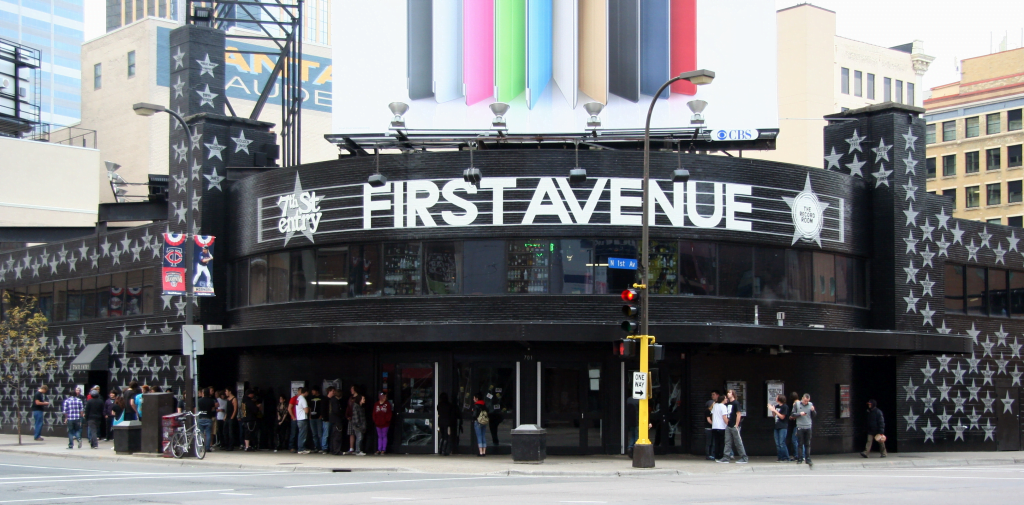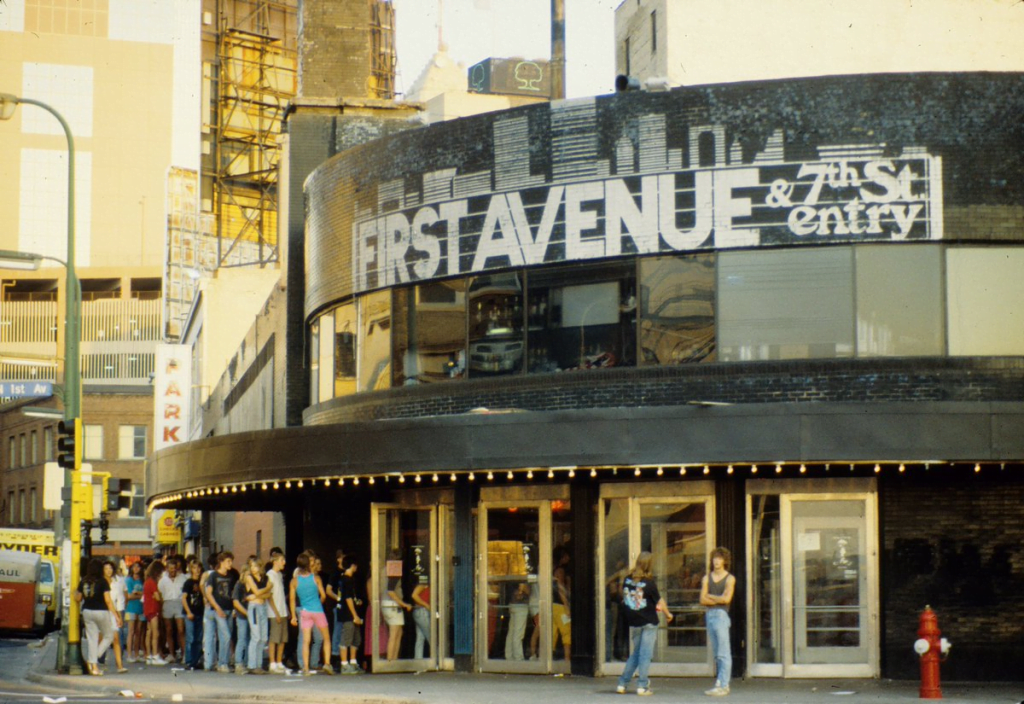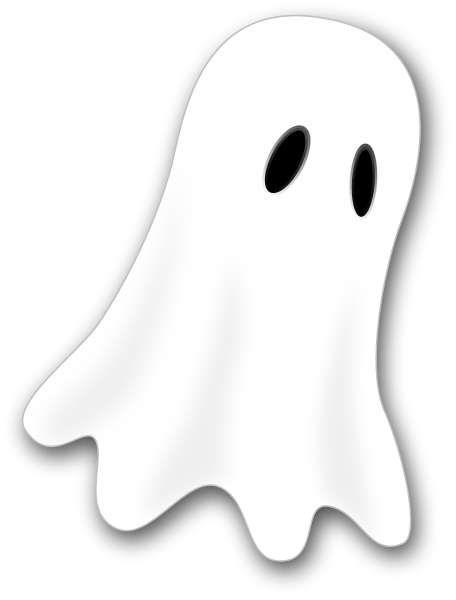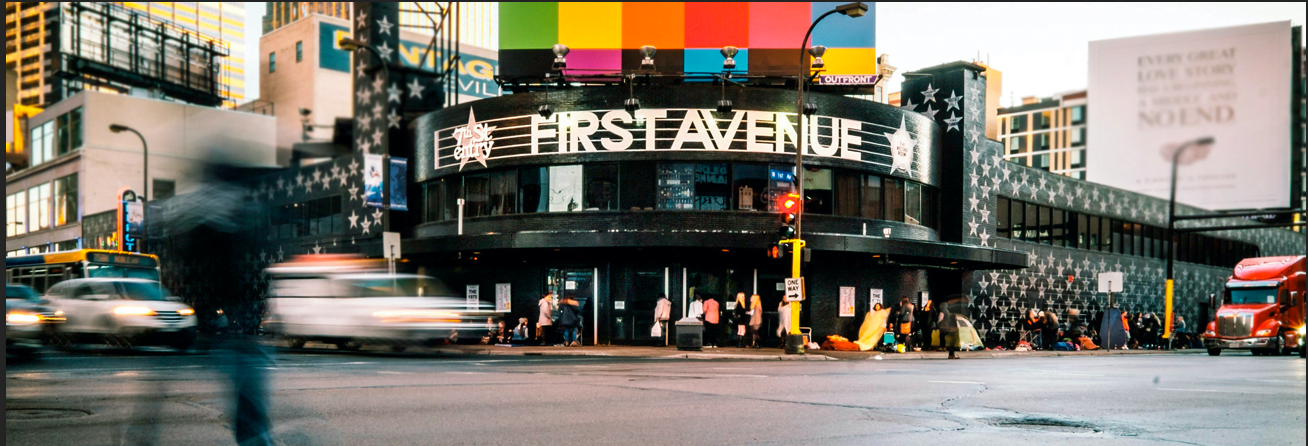With loud, bumping music and the lights of a nightclub, one would think it would be difficult to spot a ghost in the crowd. But employees at this historic dance hall have stories of their own of ghostly patrons that appear and disappear. Screams have been heard around the club, and the building’s historic status may lend credence to the rumors of haunted activity. With a storied past including hometown musical hero Prince, let’s explore the haunted history of the First Avenue Nightclub in Minneapolis, MN.

The building that would eventually house First Avenue started life as a Greyhound bus depot in the mid 1930s. A bustling center of transportation, many in Minneapolis would flock there for their travel needs in the region as the depot operated for over 30 years. The depot was renowned for its elegant art-deco design and the luxury of air conditioning as travelers waited for their buses. The depot moved its operations in 1968 to its present location on 10th street.

Upon the bus depot’s closing in the late 1960s, enterprising Allan Fingerhut (of the mail-order Fingerhut fame) would renovate and refurbish part of the building into a nightclub, very exciting during the age of musical discovery and psychedelic rock that was popular at the time. The nightclub would be named “The Depot,” as an homage to its previous life with Greyhound buses. On the first night of the nightclub in 1970, the headlining act was Joe Crocker. A few years later the club would undergo more renovations to keep up with the changing tastes of the public, creating a patriotic red, white, and blue theme in the club and playing popular disco music throughout the 1970s. It even had a DJ stage and a plexiglass clear floor, making it one of the most popular dance clubs in Minneapolis.

On New Year’s Day in 1981, the Depot underwent a name change and became First Avenue, the name it keeps to this day. Another small music venue would be created within the historic depot building known as the 7th Street Entry, with a capacity of 1500 for small musical acts and events. Sold out concerts would be hosted there, including the Ramones and Pat Benetar in the early 1980s. After battling the race discrimination in Minneapolis at the time, owners would routinely defy expectations by booing popular African American musicians, much to the delight of those attending the club’s popular dance nights.
Over 400 prominent artists would perform at First Avenue during its height in the 1980s, including being the hometown venue for Prince and even being featured in his 1984 film “Purple Rain.” Prince performed 9 sold-out performances at First Avenue, and was such a staple on the stage that many in Minneapolis assumed he owned the club himself. When Prince was filming Purple Rain, he offered $100,000 to use the club as a prominent set piece in the movie. Many employees acted in the film as extras and monumental scenes from the project were filmed at First Avenue.

The club received renown throughout its long life in downtown Minneapolis, even being named one of the top nightclubs in the country by Playboy Magazine and continuing to host sold-out concerts and dance nights well into the 2010s. However, rumors of haunting activity followed First Avenue through its career, all the way from the 1930s when it operated as a bus depot. The first rumor includes the tragic death of a young woman during WWII, who was said to have taken her own life in the bathroom of the depot.
Concert goers and employees alike reported seeing the woman in the ladies bathroom on multiple occasions. Some said they saw her with a noose around her neck while others asserted she wore a white dress covered in blood. Screaming and crying could be heard from the fifth stall in the bathroom, and employees warned against entering the restroom with the lights off. Other reports say the woman can be seen o the dance floor during dance nights, as if visiting a USO event and dancing with young soldiers. None of the ghostly dancers seem to appear with legs, however, frightening the DJs and dancers who witness her appearance.

DJs seem to get the brunt of the paranormal happenings, with many describing the sensation of hearing screaming within their headphones and the arm of their record spinners acting of its own accord without human intervention. Even modern DJs with their state of the art technology report malfunctions occasionally while playing the club. One employee reported feeling a ghostly tug on her hair regularly on nights she worked. Until it was pointed out by another patron that no one was there to pull her hair, the occurrences took on a chilling reputation.
The reports of death within the club are not corroborated by any newspaper coverage or historical reports, causing many to doubt the story of the young woman’s demise, but regardless, very few discount her appearances within the building. Another ghost known affectionately by staff as “Flippy,” is said to cause the sound of barstools being placed on the tables, long before the closing of the club for the night. Whether you run into an iteration of the female spirit haunting the bathroom, feel the sensation of having your hair pulled, or see the ghostly barkeep closing up for the night, a night at First Avenue is guaranteed to be great entertainment. The nightclub continues to operate today, offering dance nights, private events, and concerts of various local and touring bands. Would you be brave enough to check out the bathrooms and find out for yourself if a crying spirit is still attached to the fifth stall?
- About the Author
- Latest Posts

Born in Death Valley and raised on the prairie, Deborah is a Wyoming-based paranormal researcher and University of Wyoming graduate. Her interests lie in folklore, history, symbolic interaction and research. She also researches the paranormal academically and is a graduate student studying sociology.


